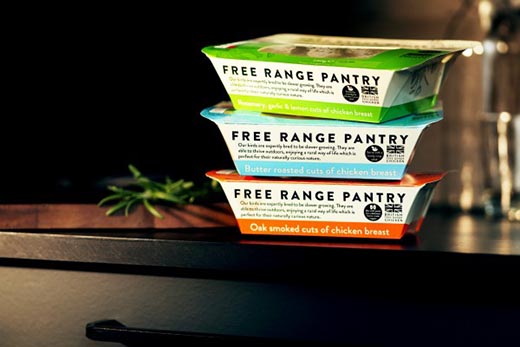Barrier-Coated Paperboard – The Alternative to Plastic for Smart Packaging
Press release from the issuing company

Replacing the plastic tray in food packaging with a combination of paperboard and plastic can reduce the tray’s climate impact by about 80 per cent. Photo: Gabriel Liljevall.
The hunt for materials that can replace plastic is intense. Innovation work is being done on a global scale to find renewable alternatives to plastic so that humanity can reduce the huge impact on the environment from our use of plastic. Many solutions are being tried but we still have no material with all of plastic’s great advantages without its devastating disadvantages. Instead of waiting for that magic material, which may never come, packaging buyers concerned about the climate should consider the existing alternatives and move to composite materials.
Proven packaging solutions already exist that combine a renewable material such as paperboard with a small amount of plastic, reducing their climate impact by over 80 per cent compared with traditional all-plastic packaging.
One very common type of food packaging is the plastic tray, which is then sealed for its onward journey to the consumer. Instead of making the entire tray of plastic, an easy alternative is to replace the plastic with a composite material consisting of renewable paperboard with a thin plastic layer that supplies the barrier properties needed to protect against moisture, grease and aromas. The stiffness and strength required for the construction comes from the paperboard’s wood fibres, and the plastic’s barrier properties provide the functional finishing touch. This relatively easy change of materials reduces the packaging’s climate impact by over 80 per cent.
“Plastic is an excellent material for packaging. It is very formable and provides the seal we need in food packaging with high hygiene requirements,” explains Stefan Söderberg, Sales Manager New Products at Iggesund Paperboard. He is leading the market launch of Inverform, a composite material from Iggesund that can replace all-plastic trays and greatly reduce the trays’ climate impact.
Various types of packaging made of plastic-coated paperboard have existed for decades. But thanks to the latest advances in paperboard manufacture, they have gained better functionality and reduced their climate impact. The debate over fossil versus renewable materials and their respective climate impacts has further placed the combination of plastic and paperboard in an increasingly positive light.
“The disadvantages of plastic packagings is that they are normally totally fossil based and are also not very easy to recycle,” comments Johan Granås, Sustainability Director at Iggesund Paperboard. “In comparison, our paperboard’s climate impact is about 90 per cent less than that of plastic. By combining paperboard with a thin plastic barrier, a packaging’s total climate impact can be radically reduced compared with that of plastic packaging.”
At least three serious problems are linked to humanity’s extensive use of plastic materials:
- The large climate impact due to the fossil raw material
- The lack of biodegradability, which leads e.g. to plastic collecting in the oceans
- The low level of recycling – less than 40 per cent.
Today bioplastics are possible alternatives in some cases. These do have a better origin than traditional plastic materials but their climate impact is still only marginally lower than that of the traditional plastics and they are often extremely hard to recycle. Bioplastics can also be difficult to handle in packaging manufacturers’ production processes, often resulting in worse productivity.
“We’ve used bioplastics for about a decade in our manufacture of plastic-coated paperboard,” Stefan Söderberg says. “In production terms they’re generally acknowledged to be hard to handle, they have more limited applications than traditional plastics, and they’re also more expensive. Advances in bioplastics are constantly being made, because many companies are looking for a fossil-free bioplastic with properties that allow it to function smoothly in production – both for us as a material manufacturer and for those who manufacture the final packaging.”
But the plastic issue doesn’t end there. Last year, Iggesund Paperboard surveyed non-food retail packaging and found many examples of plastic usage where the plastic lacked any real function. These included plastic packagings for lightbulbs, headphones and textiles, all of which had great potential to reduce their climate impact.
“Many packagings contain plastic that could easily be replaced by less climate-damaging material,” Johan Granås adds. “We’ve found examples of packaging whose climate impact has been reduced by 99 per cent by replacing the material. It’s sensible to start there – to invest in the easy climate gains and wait for the innovation process to find solutions to the more difficult packaging challenges.”
While waiting for the materials manufacturers to find new, fossil-free barriers, the market is demanding packaging made of paperboard coated with either traditional plastic or bioplastic.
“Replacing the plastic and minimising the climate impact is something that all major brand owners have written into their environmental guidelines, and their numbers are growing every month,” Johan Granås concludes.
© 2025 WhatTheyThink. All Rights Reserved.













